This post may contain affiliate links. Please read our disclosure policy.
How to juice celery to enjoy alone or in juice blends as a fresh and nourishing beverage – including the top benefits of celery juice and its side effects!
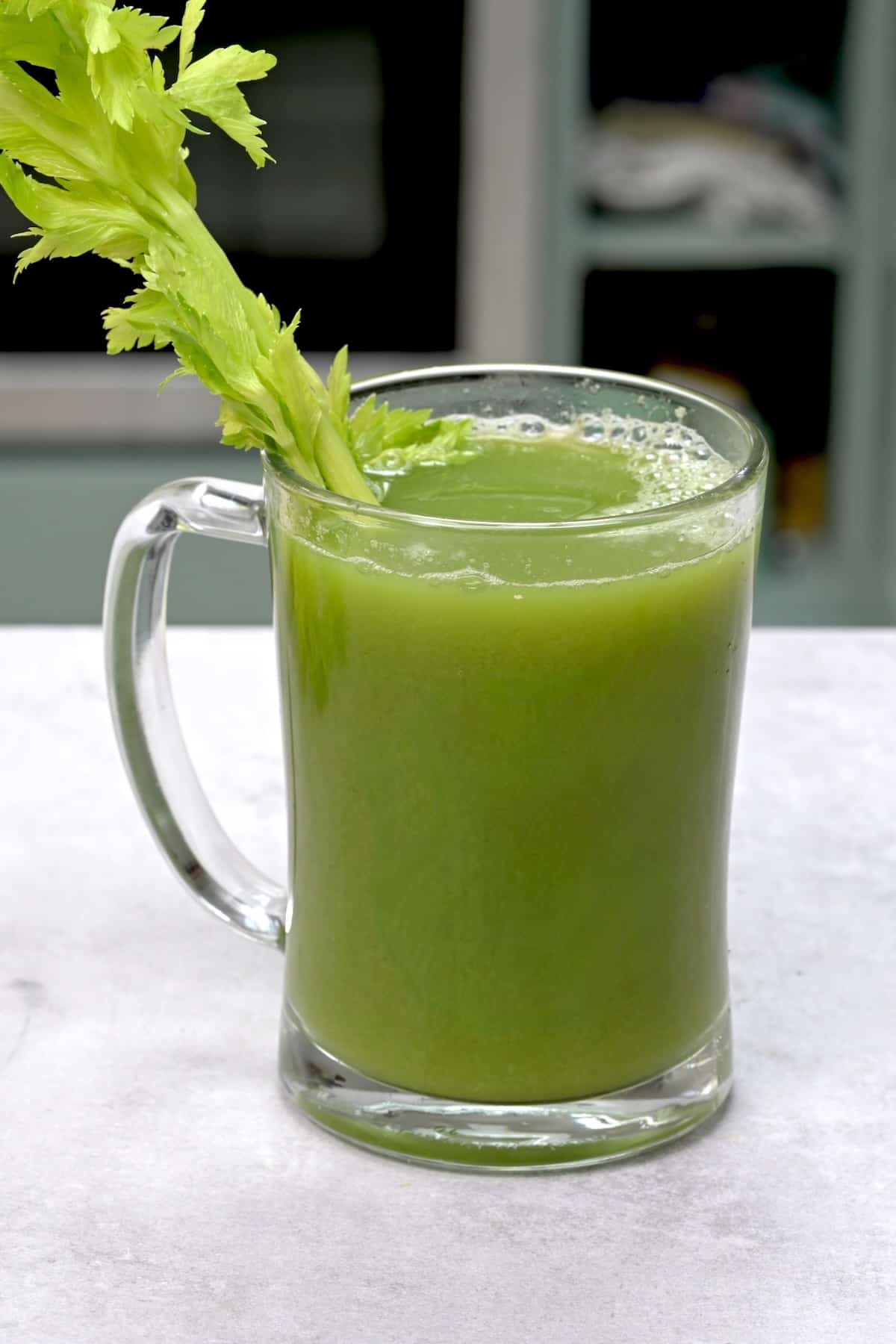
I’ve always prescribed an 80/20 approach to my diet, trying to consume a primarily healthy 80%, with 20% treats along the way. One way I love to provide my body with a concentrated dose of nutrients and benefits is through juicing! And, while I’ve shared recipes for healthful immunity and energy juice shots, plain celery juice has taken the health world by storm. Why?
Well, it’ll take you probably less than 10 seconds of Googling to come across some of the many testimonials by people worldwide turning to celery juice as practically a cure-all – including claiming it can boost energy levels, clear skin, reduce inflammation, and even improve symptoms of several chronic illnesses. Some even claim that drinking fresh celery juice enabled them to ditch daily medications.
Having said that, this salty, earthy, and even somewhat bitter juice doesn’t always have science to back up the claims – although we can all agree it’s highly hydrating and loaded with several nutrients and antioxidants. So, keep reading to learn how to juice celery and the benefits of celery juice (and the side effects), as backed by science, to help you uncover if it’s worth adding to your diet.
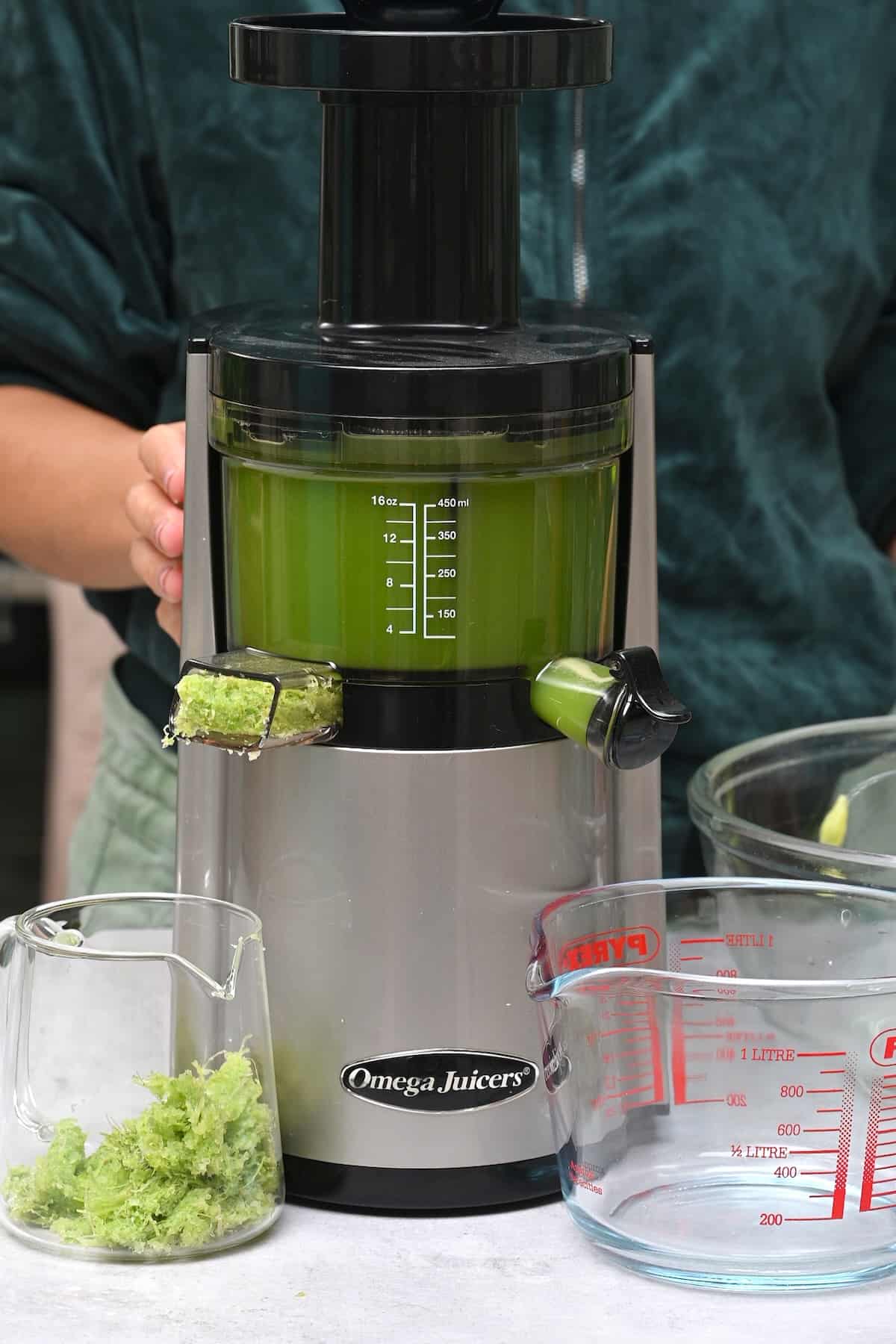
Want to save this recipe?
What are the benefits of drinking celery juice?
From reading testimonials online, you wouldn’t be amiss to think that celery juice is the be-all-end-all of nutrition and health. But what benefits does drinking celery actually provide? First, let’s start with the claims that science also backs.
- Highly nutritious: A great source of vitamin K, vitamin C, vitamin A, potassium, and magnesium. Along with lower levels of copper, zinc, folate, other B vitamins, and various antioxidants.
- It’s hydrating: This may not be its most impressive benefit, but hydration is key for several bodily functions, including blood pressure, brain function, and kidney health.
- Anti-inflammatory: It is a rich source of phytonutrients. This plant compound acts as a beneficial antioxidant to reduce oxidative stress and inflammation while fighting harmful free radicals and providing anti-cancerous benefits.
- Antioxidant-rich: This juice, in particular, contains two plant compounds (luteolin and apigenin) that could potentially reduce gut inflammation, improve digestion, and improve symptoms of arthritis, cardiovascular disease, and certain brain diseases
- Antibacterial: There have been some, albeit limited, studies looking at celery’s antibacterial and antifungal properties.
To check out more information on the health benefits, read this article on Healthline (light reading) or this study on the antioxidant activity of celery (heavier reading).
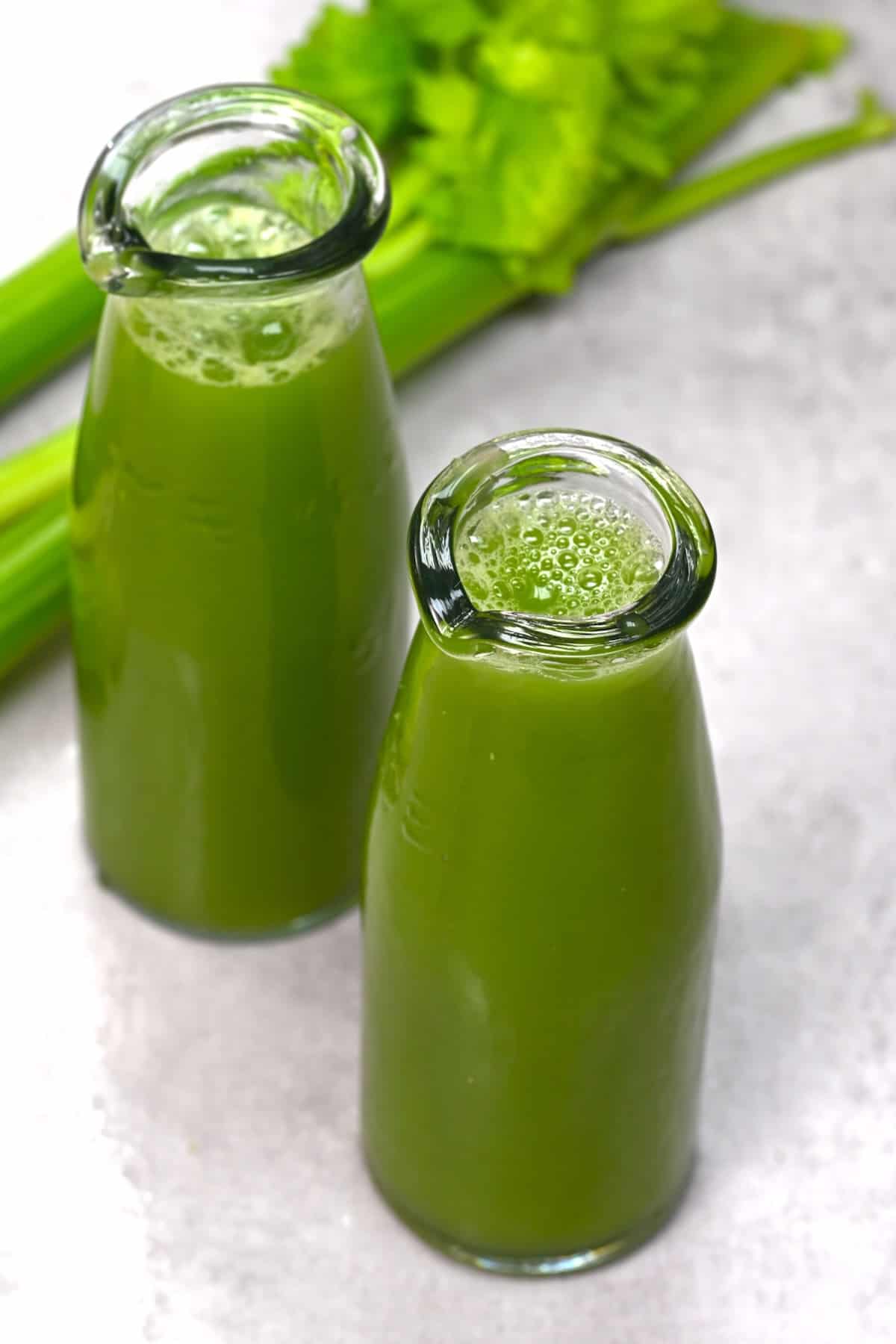
However, those certainly aren’t the only claimed health benefits of celery juice, with reported benefits ranging from:
- Skin clearing,
- Lower blood pressure,
- Blood sugar control,
- Weight loss/improved gut health,
- Psoriasis relief,
- Relief of liver disease symptoms,
- PCOS symptom improvement,
- Detoxify/remove toxins from the body.
Unfortunately, there are limited – if any – studies carried out to back up these claims, so more research is required.
The side effects
It’s worth noting that while many people have no issues with drinking celery juice, not everyone will get along with it.
- Those with irritable bowel syndrome (IBS) or other digestive sensitivities may struggle with the juice, as it can cause bloating, discomfort, and/or loose stools.
- Also, the juice contains sodium – 215 mg of sodium per cup (of your daily 2300 mg). So, those with high blood pressure or heart disease need to keep that in mind.
- In rare cases, consuming high amounts of celery can increase the skin’s sensitivity to UV light (the sun) due to the chemical Psoralen.
- It’s also best to avoid juicing celery if you take thyroid or blood clotting/blood pressure medication.
To avoid any potential issues, I recommend speaking to your local GP/a healthcare professional before making big changes to your diet.
How to make celery juice (in a juicer)
- First, wash and trim the celery stalks, making sure to remove any dirt.
- Then, feed the celery into your juicer, give the final juice a stir, and enjoy!
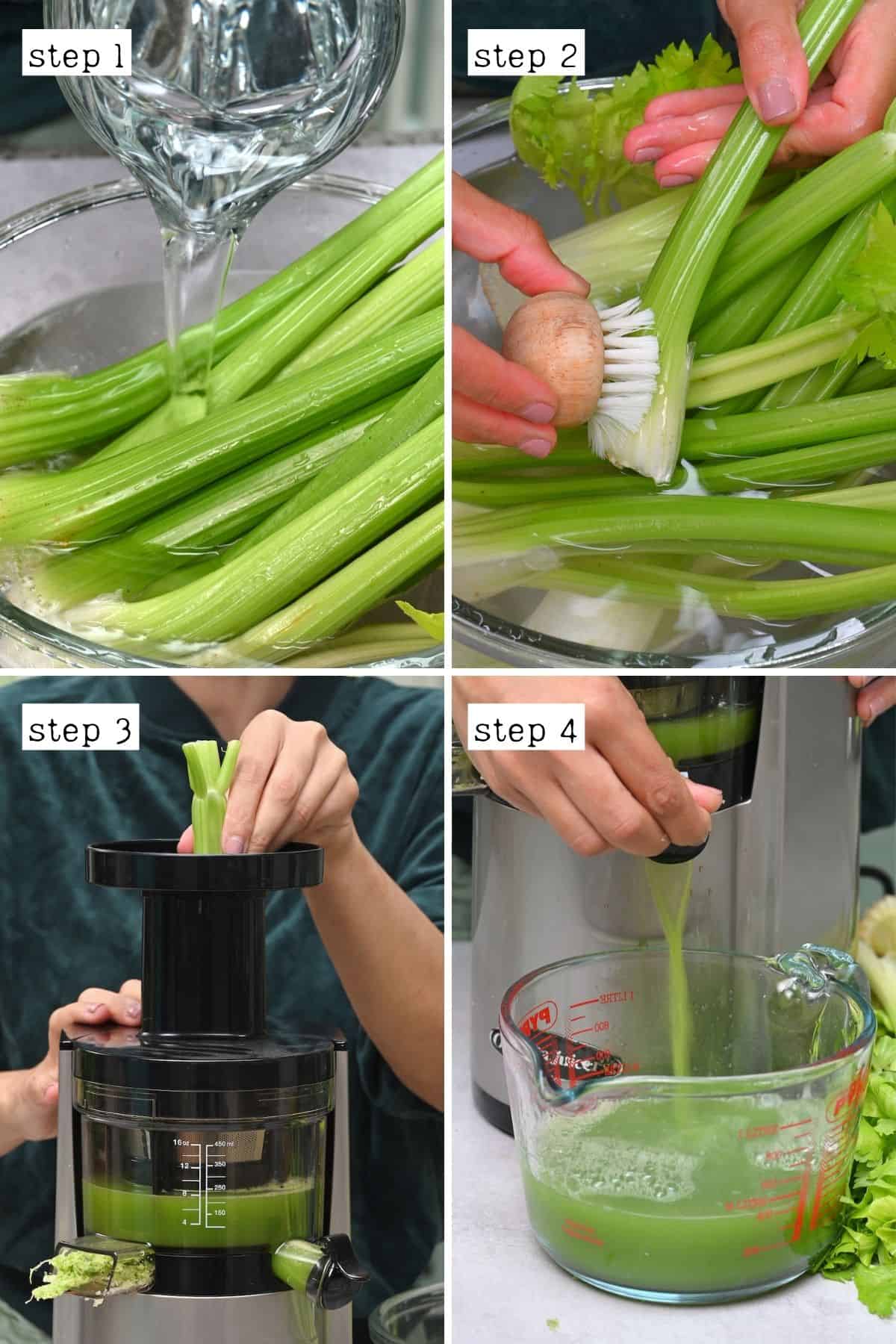
To make celery juice in a blender: Blend the celery (cut into small chunks) with about ½ cup of water or coconut water until smooth. Then, strain the juice through a fine-mesh strainer or nut milk bag, squeezing/pressing well to extract all the juice.
Boosting flavor
- Zingy citrus: A squeeze of lemon juice or lime juice helps brighten and complements the earthiness of celery. Add zest for more zing.
- Apples: Select the type of apple based on how sweet or tart you’d like the juice. I prefer sweet apples, like Honey Crisp or Fuji apples. Green apples will maintain color.
- Ginger: A small piece of fresh ginger root will add a kick of heat and warmth.
- Fresh herbs: Basil, mint, or cilantro add herbal, aromatic depth.
- Cucumber: To naturally dilute the juice while adding hydration and fresh, subtly sweet flavor.
- Cinnamon: Just a pinch for warmth.
What to do with celery juice pulp
There are several ways to save this green pulp from the trash:
- Add it to smoothies or soups for extra fiber and nutrients,
- Use it to enhance the flavor of homemade chicken or vegetable stock,
- Bake it into bread or savory muffins,
- Dehydrate and grind into a powder to add extra nutrients and fiber to foods/drinks,
- Compost it.
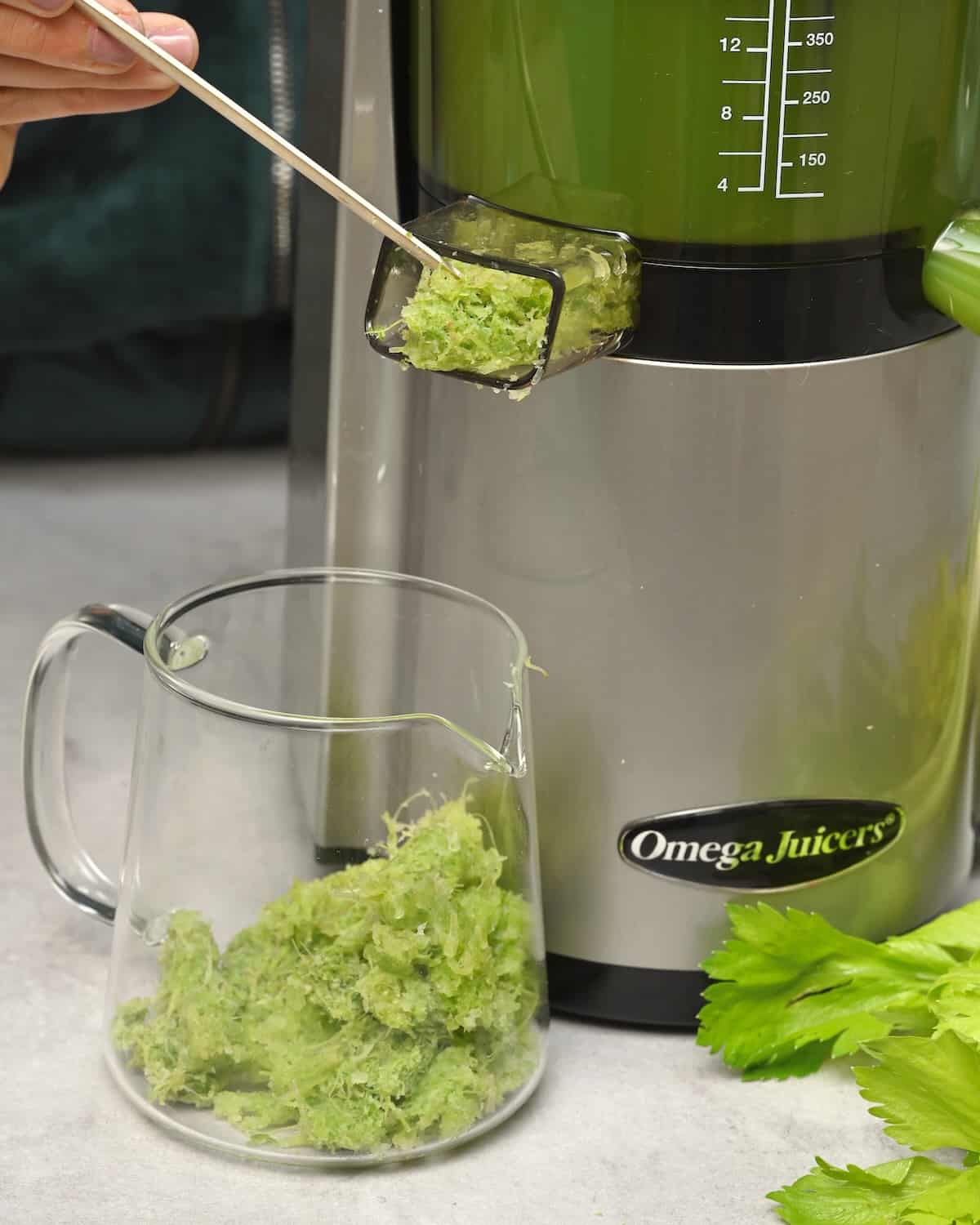
You can also freeze it in an ice-cube tray or spread it flat in a Ziplock bag for 2-3 months to use later.
How long does celery juice last in the fridge
It’s best to enjoy freshly made celery juice immediately for optimal nutrient absorption. However, any leftovers will store in an airtight container in the fridge for 2-3 days.
You can also freeze the juice, portioned in an ice-cube tray, for up to 4 months.
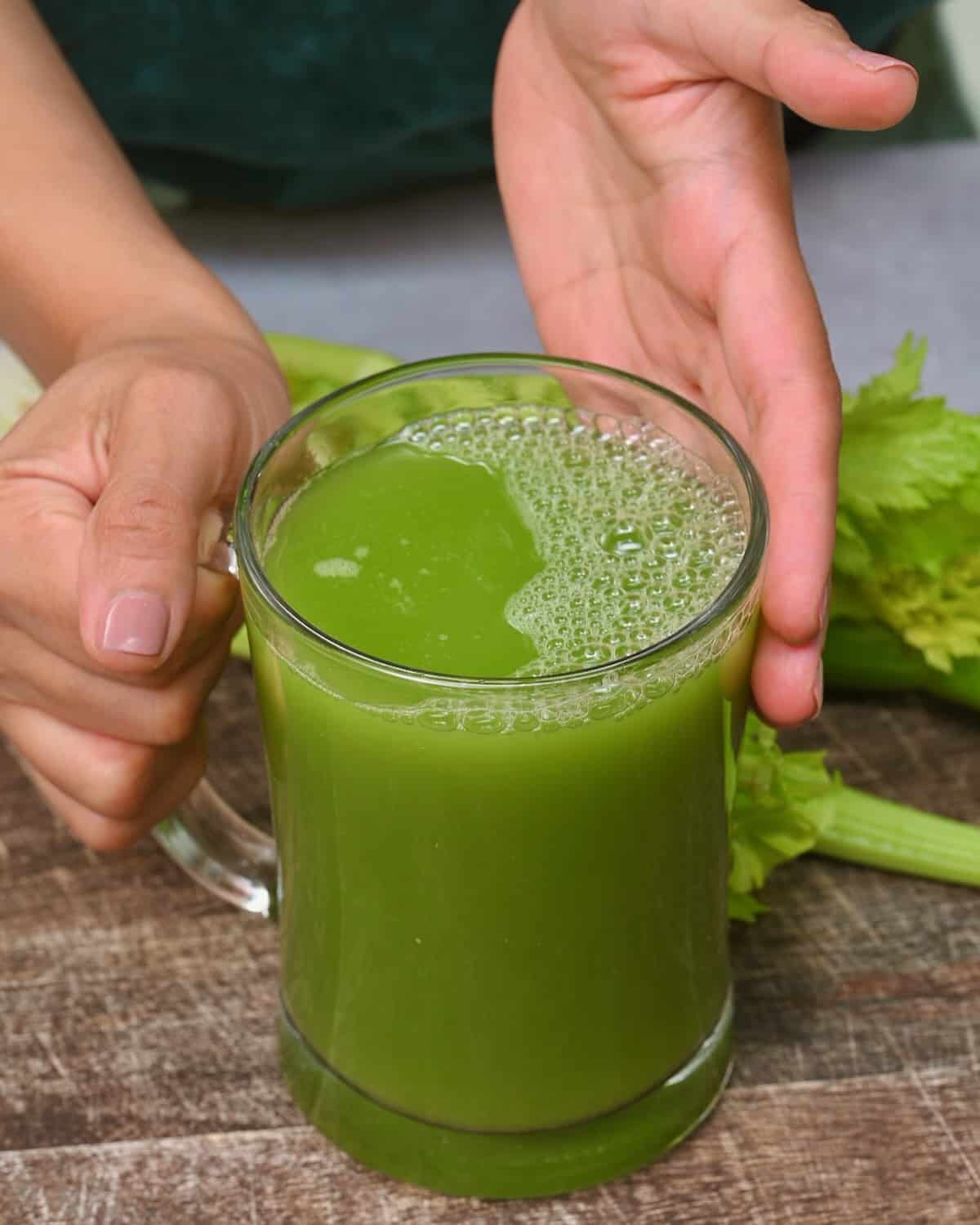
More homemade juice recipes
If you try this fresh celery juice recipe, let me know how it goes in the comments below. I’d appreciate a recipe card rating and would love to see your recipe recreations – tag me on Instagram @Alphafoodie!
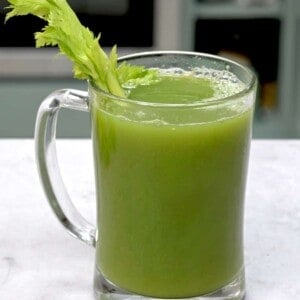
How to Make Celery Juice (In a Juicer)
Equipment
Ingredients
- 28.5 oz celery organic is best
This will yield about 2.5 cups (600 ml) of juice
Instructions
- Wash and trim the celery stalks, making sure to remove any dirt.
- Feed the celery into your juicer, give the final juice a stir, and enjoy!
Video
Notes
- Use organic celery: (When possible) This will help you avoid consuming large quantities of pesticide chemicals. Celery is on the Dirty Dozen list.
- Don’t discard the pulp: There are several ways to use it listed in the post.
- Fresh juice is best: Consume it immediately to consume the maximum amount of vitamins, minerals, and active enzymes before oxidization breaks them down.
- The best juicer: I recommend using a slow juicer or masticating juicer to minimize oxidization and heat for maximum nutrients in the detox green juice.
- To dilute the juice: If you can’t drink it alone, try diluting it with a little water/coconut water or turn it into a delicious green juice.
- The celery juice cleanse: Drink 16 oz (475 ml) of celery juice each morning on an empty stomach. If the cleanse is something you’re interested in, check out this resource from Medical Medium.
- To make celery juice in a blender: Blend the celery (cut into small chunks) with about ½ cup of water or coconut water until smooth. Then, strain the juice through a fine-mesh strainer or nut milk bag, squeezing/pressing well to extract all the juice.
Nutrition
Nutrition information is automatically calculated, so should only be used as an approximation.

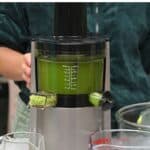
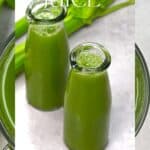
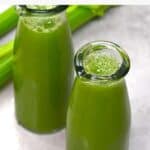
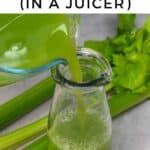
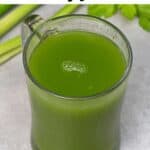
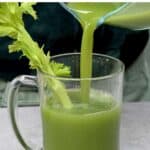









Excellent recipe! Thank you
AWESOME
Thank you so much for your comment, Franklin!